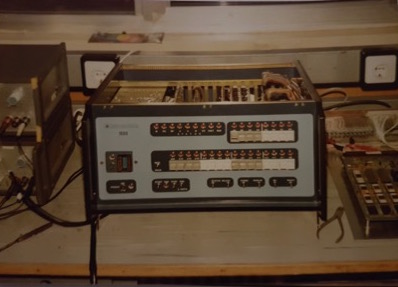Iskradata 1680

- 1977-1984
- CPU: Motorola 6800
- RAM: 48 kB
- ROM: 16 kB
- Modular design enabling optional configurations
The IskraData 1680, or ID 1680 for short, is a computer system developed in 1977 by the Iskra Computers BOAL in Kranj which manufactured it until 1984. It was intended to be used for business, laboratory, and educational purposes, but was most often used to automatize processes due to its ability to execute operations in real time.
The ID 1680 microcomputer was based on an 8-bit Motorola 6800 microprocessor and a modular system design. The processor, along with the memory and other components, was connected to a collective bus, to which each module’s signals were connected. Because the modules did not have their own physical addresses, their place of attachment was completely optional, as the address could be set up using switches and connections.

IskraData’s modular design enabled it to adapt to different market demands quickly and easily. The company also made universal 2E-format printed boards on which users could add and develop their own modules. This enabled users to expand the system to numerous different types of configurations.
The system ran on the main 48 kB RAM and the faster 16 kB ROM, while the data was kept on an 8-inch disc unit.
The modules added as input-output devices were: control panel, 300-baud modem, analog-digital converter, digital-analog converter, real time clock, RS-232 serial connection, Centronics parallel connection, and a modem for managing 16 programme interrupts.

The ROM saved the basic residential programmes the ID 1680 needed to function. These were monitor programmes, a line text editor, a micro assembler, the BASIC language translator, a debugger, and others. All these programmes enabled the computer to effectively communicate with peripheral devices, such as video displays, teleprinters and other similar devices. The use of other units running on rotating discs was enabled by Iskra’s IDOS disc operating system.
By using a programmer unit, the user was able to permanently write optional programmes onto the memory circuit and use them in their system simply by inserting the memory circuit into the system.
Sources:
- Informatica - Časopis za tehnologijo računalništva in probleme informatike, št. 4, stran 9-10, 1978
- Wikipedia
- Janez Kožuh
